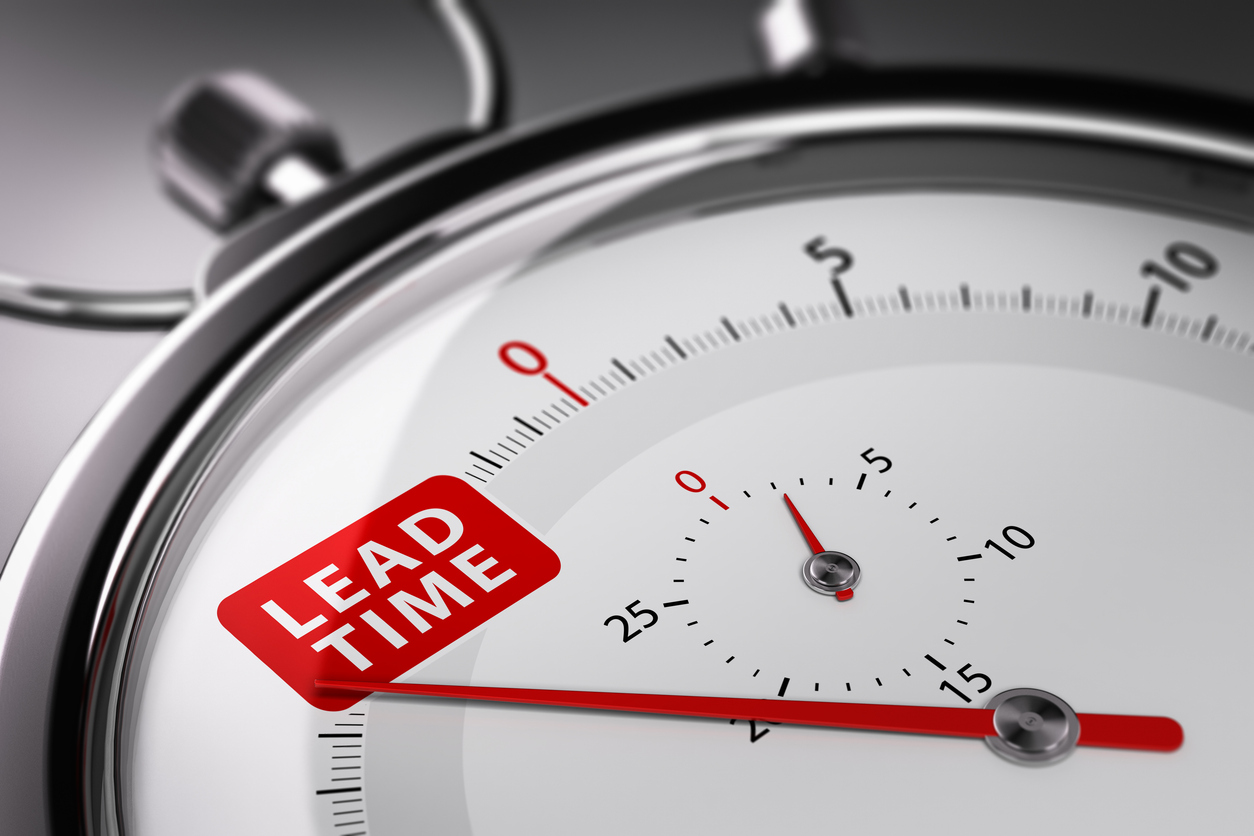Modern consumers love instant gratification. In this environment, your lead response time can make the difference between getting the sale or losing it to a faster competitor. In fact, the fastest responders consistently win more business compared with those who are slow to follow up. Once you understand the value of immediate engagement, you’ll have fewer opportunities that slip through your fingers.
When a prospect reaches out to you, they’re signaling a high degree of interest in using your product or service to solve their problem. That exact moment presents your best probability of getting a conversion. But what if you can’t respond instantly? The key is to respond within the window of opportunity before the customer decides to move on to a competitor.
Why Lead Response Time Matters More Than Ever
Technology has put a world of information at our fingertips. Decision-makers are able to get all the information they need to make decisions nearly instantly, at least until they have to wait for a response from a person. This extends the compressed timeline that consumers have become used to. It’s a behavioral shift that has transformed the way companies must approach sales.
The Psychology of Immediate Response
When people have questions, they want answers immediately. When they reach out to you, they’re mentally prepared to have a conversation that addresses their concerns. At this moment, those concerns are on the top of their minds. They’re actively seeking a solution that your product might provide. The longer you wait to respond, the more this window closes. As potential customers wait longer, they’re more likely to:
- Move on to other priorities
- Cool down from their initial enthusiasm
- Engage with faster-responding competitors
- Forget the specific context that prompted their inquiry
The Competitive Reality
Immediate responses aren’t easy to provide, no matter how much consumers may want them. As such, most businesses struggle with lead response times. This creates big opportunities for those who prioritize speed and can respond quickly. While most companies take hours or days to follow up on a new inquiry, the most successful have worked out ways to improve upon those times.
The Gold Standards: Lead Response Time Benchmarks
When determining how well you compare to your competitors, it’s helpful to understand industry standards. The times below are the gold standards. They’re significantly faster than most companies respond, but they are the timelines in which your most successful competition is likely responding.
The 5-Minute Rule
Among the most successful companies, responding within 5 minutes is ideal. This timeframe reaches the prospect while their interest is still high and will easily re-engage them. It’s also much faster than most competitors in most industries will respond, providing a significant advantage.
The 1-Minute Advantage
Some industries have faster-than-average response times. If your industry is included in that, you’ll have to beat 5 minutes to get ahead of enough competitors. An ultra-fast response time of 1 minute reaches customers before they are swiped away by another company and demonstrates a high degree of professionalism.
The Hour Threshold
Not every business has the resources to respond within a few minutes. That doesn’t mean those businesses can’t still capitalize on fast response times. Responding within an hour will still beat out most competitors and give you the best chance of competing with companies that have responded more quickly.
Building Your Speed-to-Lead System
You can dramatically decrease the time it takes to respond to leads with a solid strategy in place.
Foundation: Automated Detection and Routing
The foundation of your speed-to-lead systems starts with how you capture and process leads:
- Instant Lead Capture: Make sure all your lead generation tools notify your sales team as soon as new inquiries arrive. Use multiple notification channels to ensure no contacts are missed.
- Smart Lead Assignment: Avoid delays from manual routing with automated routing tools that assign leads to the appropriate team member. This can be based on territory, product type, lead source, or more.
- Priority Flagging: Use lead qualification tools that automatically identify potentially high-value prospects and route them for quicker attention.
Multi-Channel Response Strategy
People have wildly varying preferences in communication methods. Be sure to allow them to contact you through their preferred channel.

- Phone: Voice calls are great because the conversation is immediate. They give time for rapport building and typically have the highest conversion rates.
- Email: If you use email, send personalized messages that reference the prospect’s specific inquiry. Stay away from generic templates as they feel impersonal.
- Text Messaging: SMS delivers much better open rates than email. This makes text messages perfect for time-sensitive follow-ups or as a complement to phone calls.
Response Optimization
With the leads captured and routed, it’s time to focus on your response.
- Immediate Response: It may be obvious, but aim to respond as quickly as possible to new inquiries. Salespeople should immediately put new notifications into their queue and reach out quickly.
- Follow-Up Sequences: You may not get a response to your response promptly, particularly if you didn’t respond fast enough. Plan how and when you’ll follow up on new inquiries.
- Time Zone Awareness: Remember, not everyone is in your time zone. Sometimes, it’s impossible to respond quickly. Automated acknowledgments can bridge the gap until you can.
Technology Solutions for Instant Lead Response

Thankfully, there are several tools available that will help you provide immediate responses to inquiries.
Automated Response Systems
- AI-Powered SDRs: AI-powered sales development representatives can handle top-of-funnel activities like lead qualification, outreach, and engagement to reduce the workload of sales teams and allow them to talk directly with more prospects.
- Chatbots and Live Chat: Chatbots have come a long way in recent years. Modern AI tools can now respond to visitors in real time in an intelligent and helpful way. They can gather important information and pass it on to the salesperson for a more informed conversation.
Integration and Workflow Tools
Integrating your lead generation process into your workflow tools makes it much more efficient to respond to them, decreasing lead response time.
- CRM Integration: All leads should feed directly into your customer relationship management system. Ideally, you’ll have automatic task creation for follow-up actions.
- Calendar Scheduling: When applicable, allow prospects to connect with your calendar system so they can pick their own time for setting up a meeting.
- Mobile Optimization: Your sales teams should be able to respond to leads immediately, even when they aren’t near their desks. Mobile devices are perfect for this if set up to handle leads.
Strategies by Team Size
A large team with more sales staff than prospects will have a much easier time responding quickly than a single person fielding hundreds of requests. This obvious fact reveals the need to adjust strategies significantly depending on team size.
Solo Entrepreneurs and Small Teams
When you have a single person or a very small team, you want to make as much use of automation as possible. Allow technology to handle the initial responses and use automated acknowledgments to buy you time while still appearing responsive. Set clear and accurate expectations for when prospects can expect to hear back from you and respond to the highest-value opportunities first.
Growing Sales Teams
As your team begins to grow, assign at least one person to be available during business hours to handle new leads. If you have the resources, you can create a dedicated response role. If not, rotate out the responsibility. Use team dashboards so all team members have access to the current lead status and response times. This will create accountability and visibility.
Enterprise Organizations
Large enterprises have enough resources to create dedicated response teams. These staff members should be focused on immediate lead response and initial qualification. At this level, you can also afford the best software tools, which will help with lead scoring. Have different shifts to cover all hours of the day for consistent response times across time zones.
Transform Your Strategy To Improve Lead Response Time
Regardless of your team size, Verse AI can help improve lead response time. Our AI-powered SMS platform helps teams improve lead response times through intelligent automation.
Here’s how it works:
- When a lead enters your system, Verse immediately sends a personalized text message. The message is fully context-aware, so it doesn’t feel automated.
- As the system interacts with a prospect, it asks strategic questions to help qualify and prioritize the lead. The system handles the screening and nurturing, giving your sales reps conversions that are more likely to convert.
- The AI is intelligent enough to know when the conversation has become too complex for it. Rather than hallucinating a wrong answer, it will hand off the prospect to one of our human concierges who can seamlessly continue the conversation.
- Verse AI tracks key metrics, monitoring response times, conversion rates, and more. It can even provide insights as to how you can improve those numbers.
To learn more, book a demo with Verse and see how improving your response times can increase your conversions and bring in more revenue.


